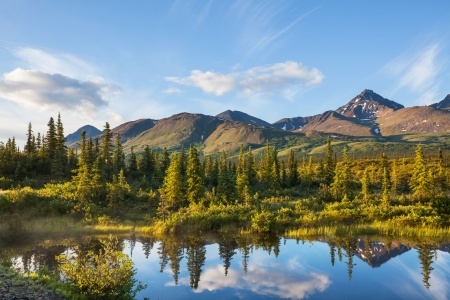Time to Overwinter Honeybee Hives in Alaska
November 07, 2016
Honey, Honey Bees, Honey Industry
As winter creeps in and the ground becomes covered in a few inches of snow, Dee Barker knows it’s time to put her bees to bed for winter at Earthworks Farm in Palmer, Alaska. “When they go into hibernation, they go into a cluster around the queen to keep her warm,” Barker explained. “The ones on the outside get kind of comatose.” Dee Barker and her husband, Bruce Hougan, have owned the Palmer farm for seven years and are experts when to comes to keeping bees over the winter, especially given they call home to a state as cold as the United States’ northern neighbor.
This Alaska couple put their hives on cinder blocks and then encircle them with chicken wire. Hougan stuffs in hay that was collected in the summer, and then this is covered with a pallet wrap. This helps the bees survive the cold. “They keep their hive around 98 degrees,” Barker stated, noting how a lot of the snow on the hives had melted because of the bees' ability to generate so much heat.
However, it is a delicate balance on when to box the bees because when the sun is shining, the bees are trying to hold on to summer even when it’s 25 degrees Fahrenheit. “They don’t need to be in hibernation, they think, when it’s this warm. So, they’re out and about,” Barker says, but when it’s usually that cold and there’s snow on the ground, the bees aren’t active.
Barker and Hougan first got their bees to help with pollination for their farm, using the bees to help grow flowers and produce, but then Barker discovered that honey could be used to make products to sell in a stand by the road. “We started with the moisturizing cream—people asked for lip balm,” she said. “We started with lip balms next, then came perfumes and deodorants and soaps and lotion bars.” Barker’s line is called Abeille Alaska (“Abeille” is French for bee), and keeping the bees all year also gives them products to sell all year.
It’s important to have a second income, especially for a couple who wants their farm to be self-sustaining. Barker said it is not just her love of bees that drives her to keep them through the winter. It’s also economical: purchasing nine new hives would cost more than $1,000, and like many newcomers from the Lower 48, Barker said the new bees wouldn’t be used to life in Alaska. However, the winter work is outweighed by the spring rewards.
Copyright: kamchatka / 123RF Stock Photo


.jpg)




